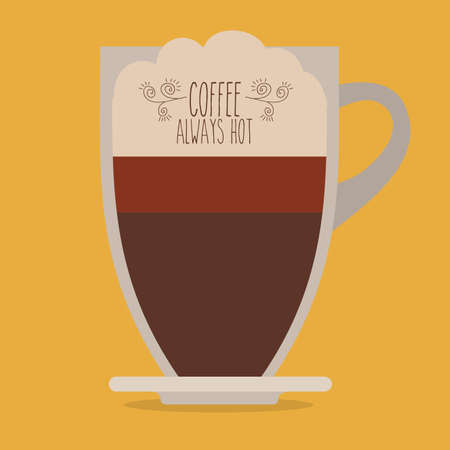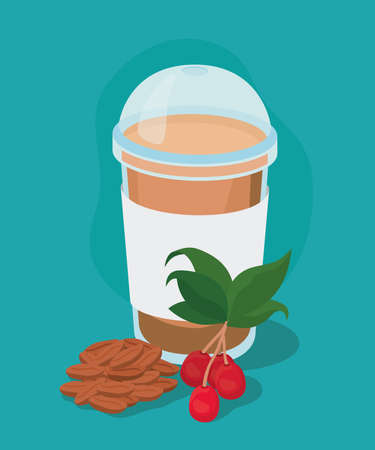The Rise of Digital Tastemakers
In today’s digital-first world, coffee culture in the U.S. is being brewed not just in cafés, but also online—one post, video, and reel at a time. Social media influencers and bloggers have become major tastemakers, shaping how people think about, talk about, and consume coffee. Whether its a viral TikTok showing off a new cold brew recipe or an Instagram carousel reviewing local coffee shops, content creators are now central to what’s trending in the world of coffee.
From Hobbyists to Coffee Authorities
Many of these influencers started simply as passionate hobbyists—blogging about their favorite brews or sharing latte art on their feeds. Over time, their consistent content and relatable voices turned them into trusted sources for coffee lovers across the country. Some even transitioned from posting online to working behind the counter as baristas or opening their own cafés.
How They Influence Consumer Preferences
These digital tastemakers influence everything from what beans people buy to how they make their morning cup. With visually appealing content and easy-to-follow tutorials, they make specialty coffee more accessible to everyday drinkers. Here’s a breakdown of how content creators impact different aspects of coffee culture:
| Area of Influence | Examples |
|---|---|
| Brewing Methods | Popularizing pour-over, AeroPress, and French press techniques through how-to videos |
| Coffee Trends | Introducing Dalgona coffee, espresso martinis, or seasonal drinks on platforms like TikTok and Instagram |
| Product Recommendations | Reviewing beans, grinders, espresso machines, and accessories |
| Café Discoveries | Highlighting indie coffee shops and hidden gems in various cities |
| Sustainability Choices | Encouraging followers to choose ethically sourced or zero-waste options |
A New Kind of Coffee Community
Instead of traditional gatekeepers like baristas or café owners setting the tone for what’s cool in coffee, content creators now foster communities where knowledge is shared freely and trends are driven by authenticity. Whether it’s a YouTuber explaining single-origin tasting notes or a blogger ranking oat milks for lattes, these voices have created a new kind of inclusive coffee space—one that welcomes beginners and aficionados alike.
2. From Hashtags to Hands-On: Transitioning into the Coffee Industry
For many content creators, what started as a passion for coffee shared through blogs, Instagram posts, or YouTube videos has turned into a full-fledged career in the coffee world. The shift from digital storytelling to real-world entrepreneurship isn’t always easy, but it’s one that more influencers are making as they turn their online clout into tangible café experiences.
From Screen Time to Steam Time
It often begins with a deep love for specialty coffee and a desire to share every latte art pour or pour-over tip with an online audience. Over time, some creators realize they want more than just likes and shares—they want to be part of the industry itself. This means learning the ropes of brewing, understanding café operations, and often starting from scratch behind the counter.
Common Paths Creators Take Into Coffee
| Online Role | Real-World Shift | Key Skills Gained |
|---|---|---|
| Coffee Blogger | Café Consultant or Owner | Menu development, branding, customer experience |
| YouTuber (Coffee Reviews) | Barista or Roaster Apprentice | Brew methods, bean sourcing, service skills |
| Instagram Influencer | Coffee Shop Co-founder | Visual branding, marketing, community building |
The Learning Curve: More Than Just Latte Art
Even with a strong following, becoming a barista or café owner requires hands-on training. Many creators attend barista schools, shadow experienced professionals, or take on entry-level roles to gain credibility and skills. Its a humbling process that replaces filters and hashtags with early mornings and espresso shots.
“I had to unlearn what looked good on camera and focus on what tasted right in the cup.” – Former TikTok creator turned barista
Building a Brand That’s Brewed Offline
What gives content creators an edge is their understanding of storytelling and audience engagement. When they open cafés or start roasting their own beans, they already know how to build a brand people connect with. Many bring their followers along for the ride—sharing behind-the-scenes moments of opening day jitters or their first perfect cappuccino.
Why Their Cafés Stand Out
- Authenticity: Customers feel connected because they’ve watched the journey unfold online.
- Aesthetic & Experience: Years of curating content helps them design visually stunning spaces.
- Community: They create cafés that reflect their values—whether it’s sustainability, inclusivity, or creativity.
This new wave of baristas may have started with Wi-Fi and filters, but they’re now grinding beans and crafting drinks for real customers—proving that passion brewed online can become something truly special offline.

3. Brewing Authenticity: Why Followers Trust Coffee Content Creators
In the age of social media, trust is everything — especially when it comes to influencers shaping trends in coffee culture. What sets successful coffee content creators apart isnt just their latte art or espresso skills; its their authenticity. Their ability to connect with followers through real stories, behind-the-scenes moments, and a genuine love for coffee builds lasting credibility.
Behind Every Brew Is a Story
Coffee creators often invite their audience into their personal journey — from the first time they tried pour-over to opening their own café. These stories feel real because they are. By sharing challenges, experiments, and even mistakes, creators show that they’re learning and growing just like their followers.
Example:
| Type of Content | Why It Builds Trust |
|---|---|
| Vlog: “Trying Cold Brew for the First Time” | Makes creator relatable; shows willingness to try new things |
| Instagram Story: Behind-the-scenes at a local roastery | Gives transparency; educates followers about coffee sourcing |
| TikTok: Failing at latte art | Adds humor and humility; builds emotional connection |
The Power of Transparency
Followers appreciate when creators are honest about what goes into each cup — from bean origin to brewing equipment. Many U.S.-based creators are upfront about sponsorships or partnerships, which helps keep their recommendations trustworthy. They’ll say things like, “This grinder was gifted, but here’s my honest opinion,” which goes a long way in building credibility.
Passion That Shows
You can’t fake passion — and coffee lovers can tell the difference. Whether it’s geeking out over grind size or nerding out on water temperature, creators who truly love the craft inspire others to dive deeper into coffee culture. Their excitement is contagious, and that enthusiasm encourages followers to explore new brewing methods or support local cafés.
Quick Tip:
If youre a creator or aspiring barista yourself, dont be afraid to share your learning curve. People aren’t looking for perfection — they’re looking for someone who loves coffee as much as they do.
This authenticity is what transforms casual viewers into loyal fans, and everyday bloggers into trusted voices in America’s evolving coffee scene.
4. Partnering with Major Coffee Brands
In today’s digital world, content creators aren’t just posting coffee photos on Instagram — they’re teaming up with some of the biggest names in the coffee industry. These collaborations are changing how coffee is marketed and even what ends up in your cup. From co-branded drinks to influencer-led ad campaigns, social media stars are becoming a key part of coffee brand strategies in the U.S.
Big Brands, Big Partnerships
Major American coffee companies like Starbucks, Dunkin’, and Peet’s Coffee have started working closely with influencers who already have a strong connection with coffee-loving audiences. These partnerships can take many forms, from sponsored content to limited-edition product lines.
Examples of Influencer Collaborations
| Brand | Influencer | Type of Collaboration |
|---|---|---|
| Starbucks | Addison Rae | Social media campaign featuring her favorite drink |
| Dunkin | Charli DAmelio | “The Charli” drink named after her; ongoing partnership |
| Peets Coffee | CoffeeBae97 (TikTok creator) | YouTube tutorials and product reviews |
What Makes These Partnerships Work?
The success of these collaborations lies in authenticity. When followers see their favorite influencer genuinely enjoying a specific brand or product, it builds trust. That trust translates into sales and increased brand loyalty. Many influencers also bring fresh ideas that help big brands stay relevant and creative in a fast-moving digital space.
Benefits for Both Sides
- For Brands: Access to niche audiences, increased engagement, modernized image.
- For Influencers: Monetization opportunities, credibility boost, expanded reach.
A New Era of Coffee Marketing
This shift shows how the traditional boundaries between marketing teams and consumers are fading. Content creators are not just promoting products — they’re helping design them. Whether it’s picking flavor profiles or naming new drinks, influencers now play a hands-on role in shaping what American coffee culture looks like today.
5. What This Means for the Future of Coffee Culture
As more content creators step into the coffee scene—not just reviewing drinks but actually shaping how we experience coffee—the future of coffee culture in America is looking more personal, creative, and community-driven than ever before.
The Lasting Influence on Brewing Techniques
Thanks to platforms like YouTube, TikTok, and Instagram, home brewers are now exposed to a wide range of brewing methods that were once reserved for professionals. From pour-over tutorials to AeroPress hacks, content creators are simplifying complex techniques and making specialty coffee more accessible.
| Traditional Brewing | Influencer-Inspired Brewing |
|---|---|
| Standard drip machines | Pourover with V60 or Chemex |
| Espresso from café only | Home espresso machines with latte art guides |
| Basic French press | Cold brew experiments with flavor infusions |
Café Aesthetics Are Getting a Makeover
With content creators frequently showcasing stylish cafés and cozy home setups, aesthetics have become an essential part of the coffee experience. Whether it’s a minimalist Scandinavian vibe or a colorful boho nook, influencers are setting new standards for what a “coffee space” should look like.
Top Café Design Trends Influenced by Content Creators:
- Open barista counters for better video shots
- Natural lighting for Instagram-worthy photos
- Custom mugs and latte art designed for visual appeal
A New Generation of Coffee Lovers
Younger audiences are growing up not just drinking coffee, but learning its craft through their favorite online personalities. This shift means we’re likely to see more people experimenting at home, starting micro-roasters, or even launching their own cafés inspired by what they’ve seen online.
The Ripple Effect on Coffee Culture:
- Increased demand for ethically sourced beans as influencers highlight origin stories
- More diverse flavors and blends entering the mainstream thanks to viral trends
- A stronger sense of community both online and offline around shared coffee rituals
The rise of content creators in the coffee world isn’t just a trend—it’s a movement thats reshaping how Americans relate to their daily cup. As these digital tastemakers continue to inspire and educate, the possibilities for the future of coffee culture are wide open.


